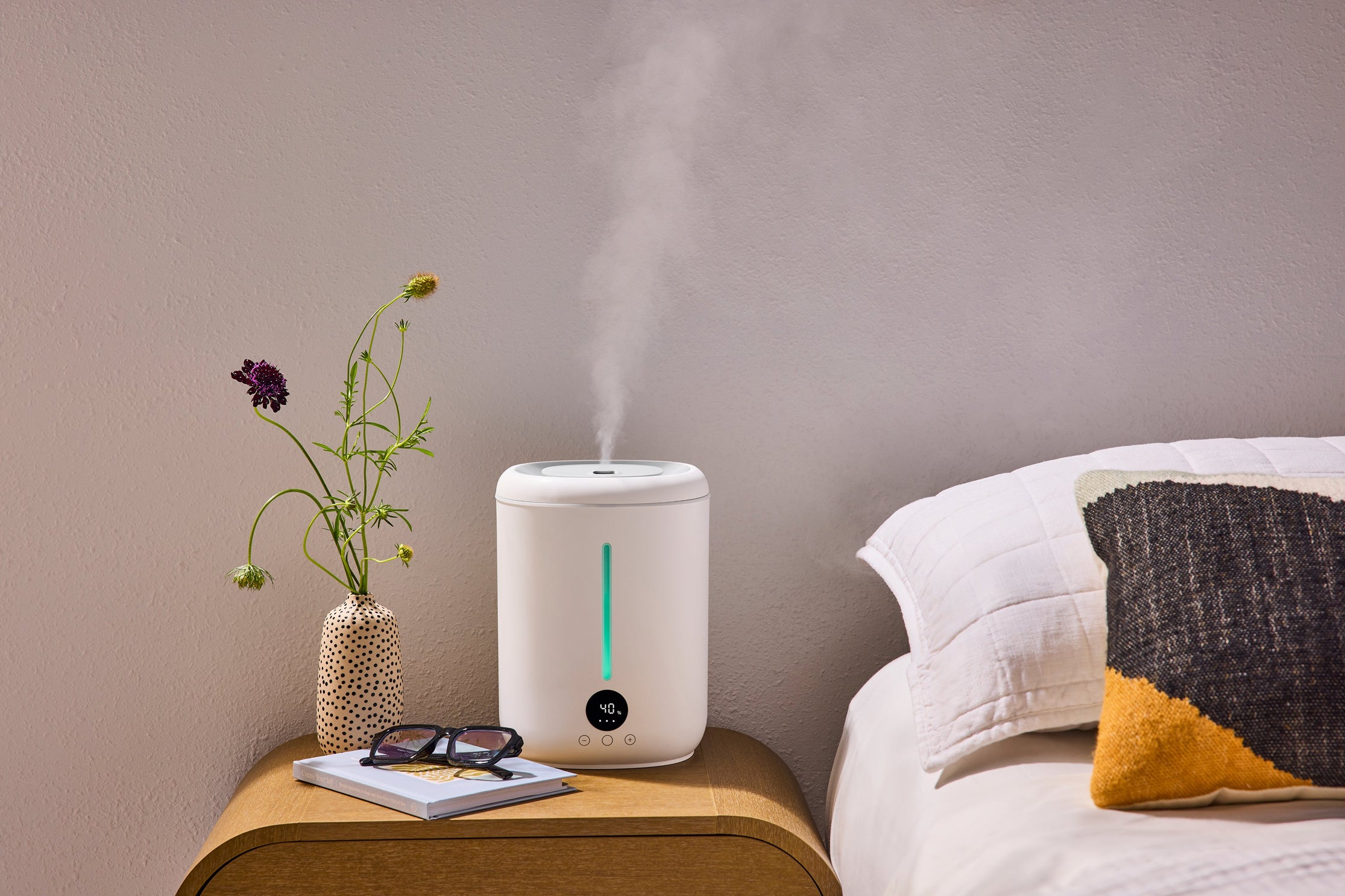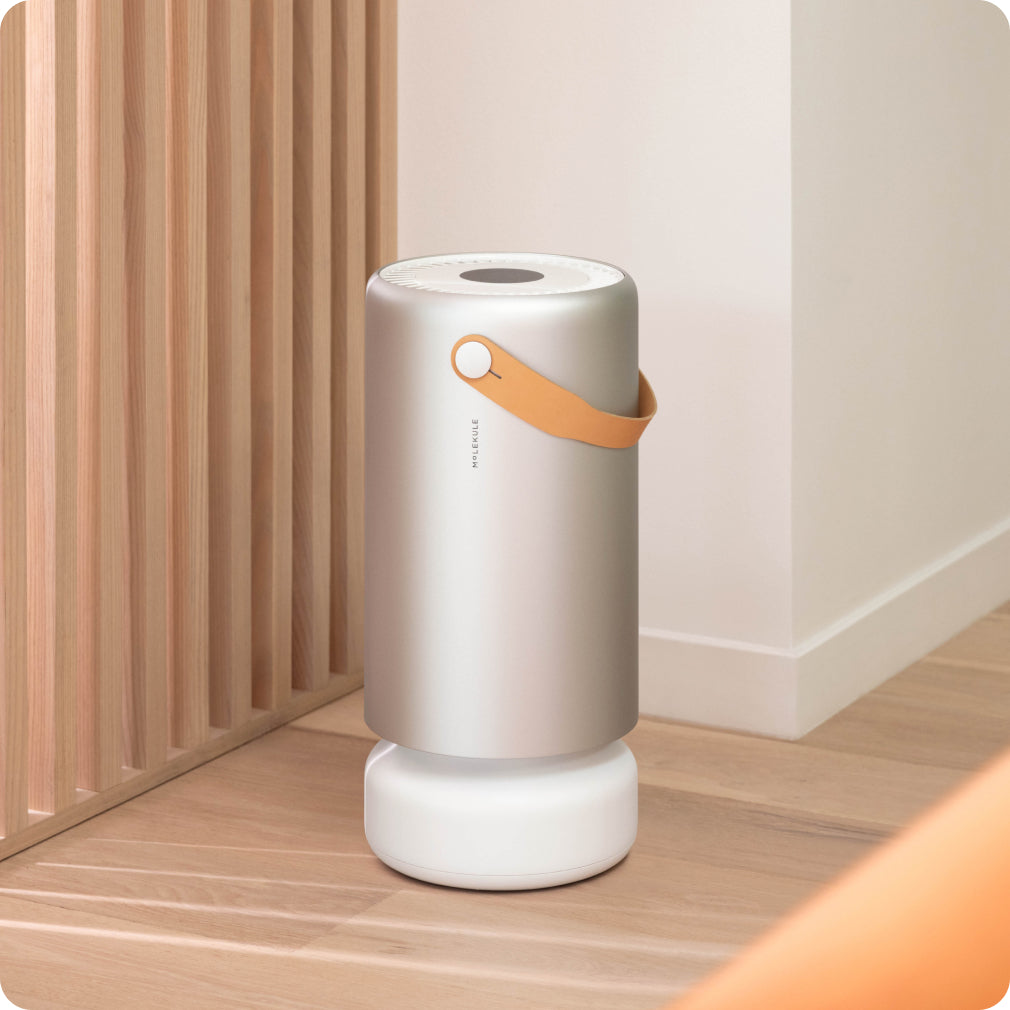For parents, back-to-school season can be more than just shopping for school supplies and new clothes. It is about setting your child up for success in the upcoming school year. Many things can impact your child’s academic performance—from the foods that they eat to the friends that they make. Did you also know that the air that they breathe can affect their success in school?
The good news is that improving the quality of the air that your child breathes is not as out of reach as you may think. By learning about the factors that can negatively impact the indoor air quality in your child’s school, and what can be done to counteract them, you can help create the best possible learning environment for your child.
Common factors that can affect the air quality in schools
With most children in the United States spending between 800 and 1,000 hours in school each year, according to the Education Commission of the States, school buildings should be considered as a potential source of exposure to airborne pollutants. In fact, EPA studies have found that half of the approximately 115,000 schools in the United States have indoor air quality problems. Indoor air pollution stems from a variety of sources, many of which have to do with school maintenance practices.
Often, when faced with a tight yearly budget, school boards and administrators choose to make cuts to maintenance needs over academic program needs. However, when maintenance falls behind, learning can suffer. Schools in need of structural repairs see higher annual dropout rates and lower average daily attendance. Adding custodians and maintenance workers, and decreasing the square footage that each worker must maintain, is one way to combat this issue (Branham, 2004).
HVAC maintenance
Adequate maintenance for heating, ventilation and air conditioning systems can help reduce lower respiratory symptoms that affect student learning. These include wheezing, cough, chest tightness and shortness of breath. Effective HVAC maintenance practices support drain pan drainage to reduce excess moisture. Eliminating pollutant sources in or near the HVAC system is also recommended (Mendell, et. al, 2003).
Ventilation
Ventilation rates in school classrooms can impact the school’s indoor air quality, affecting a child’s ability to learn. Students that learn in classrooms with higher outdoor air ventilation rates have been found to score higher on standardized math and reading tests (Shaughnessy, et. al, 2006). Additionally, increasing the amount of classroom air ventilation—and decreasing the difference between indoor and outdoor levels of carbon dioxide—can decrease student absenteeism (Shendell, et. al, 2004).
Dampness and mold
Controlling moisture in school environments can help reduce student risk of respiratory and asthma-related health conditions. In fact, building dampness and mold are associated with a 30 to 50 percent increase in these health issues (Fisk, et. al, 2007). Fixing leaky roofs, as well as preventing other areas of moisture intrusion, can help reduce the amount of accumulated moisture and mold in school buildings.
Other allergen sources
Air pollutants can come from a variety of sources and decrease the quality of air that students breathe each day. Controlling the amount of these pollutants present in a school’s air supply can be done by:
- Cleaning the school building thoroughly, but avoiding excessive use of cleaning chemicals
- Avoiding unsafe storage of cleaning products and other chemicals
- Finding alternatives to pesticides to control pest populations
- Selecting products and materials (such as paint, cleaning products and adhesives) with low emissions
- Finding and controlling emission sources such as radon, car exhaust fumes and mold
- Replacing carpet with smooth flooring
- Implementing plant and animal policies that restrict airborne pollutants
How can poor air quality in schools affect your child’s academic performance?
Student learning and productivity is affected by the health and comfort of both students and teachers. Poor indoor air quality in schools can affect student attendance and academic performance. The health effects of airborne pollutants can also impact teachers and staff, which can further disrupt the learning environment within the school.
Because children breathe more air in relation to their body weight than adults, they can be more susceptible to the effects of poor indoor air quality. When indoor air problems go unaddressed, it can cause health problems such as eye irritation, cough, headaches, fatigue and allergic reactions. Airborne allergens can also trigger asthma symptoms and other respiratory illnesses.
Allergies and asthma can make it hard for students to focus, as well as increase the number of health-related absences that a student must take during the year. According to the CDC, asthma is one of the top causes of school absenteeism. Indoor environmental exposure to asthma triggers such as dust mites, molds, pesticides and even diesel exhaust from school buses can make asthma symptoms worse. Unfortunately, these allergens are commonly found in schools.
Staying safe during school smog days
On bad air-quality days, schools should take special precautions to protect students from air pollution. School administrators can monitor local air quality on websites such as airnow.gov and modify physical activity plans based on the Air Quality Index.
On bad air-quality days, school administrators should limit outdoor activities, especially for students with asthma or other respiratory conditions. If outdoor activities cannot be avoided, frequent breaks are recommended during physical exercises.
Can your city’s air quality affect your child’s grades?
When it comes to air quality, all schools are not created equal. In addition to internal sources of airborne pollutants, outdoor pollution can impact the air quality within a school. Air pollution levels vary by city, and one of the main factors that can influence both indoor and outdoor air quality is the amount of traffic in a given location.
Children whose school buildings are located near busy roads are exposed to more toxins from traffic fumes. Students exposed to high levels of air pollution, such as those associated with high-traffic areas, have shown slower increases in cognitive function than students in areas with low air pollution (Sunyer, et. al, 2015).
Get involved
The EPA launched an Indoor Air Quality Tools for Schools Program in 1995 to help school districts control and increase indoor air quality and improve learning environments for students. The website offers many resources and practical suggestions for improving the air quality within school buildings. Parents wishing to help schools improve air quality can find talking points to discuss with school administrators such as:
- HVAC maintenance policies
- Implementation of CO and radon detectors
- The quality of ventilation in classrooms
- Plans for physical education during poor air-quality days
Can improving the indoor air quality of your home boost your child’s academic performance?
In addition to school environments, the air quality in a child’s home, especially in their bedroom, can affect their ability to learn. Fortunately, there are many steps that you can take to protect you and your children from airborne pollutants in your home. These include:
- Controlling air pollution sources—This can include regular cleaning and dusting, as well as switching to allergen-proof mattresses and pillow covers. Avoid moisture accumulation that could cause mold. Preventing allergen sources from entering your home in the first place is one of the most effective ways to improve indoor air quality.
- Increasing ventilation—Pollutants can accumulate in the air of your home. By increasing the amount of airflow through your home, you can keep asthma triggers from settling in one room. Ventilation is especially important when using products that release harmful pollutants into the air. On good air-quality days, opening windows or running your air conditioner with the vent control open can help remove airborne pollutants from your house. When possible, use bathroom and kitchen fans with exhaust to the outdoors.
- Changing HVAC filters—The filters in your heater and air conditioner trap pollutants in your air. Changing the filters regularly, according to the manufacturer’s instructions, is necessary for them to function efficiently.
- Regulating relative humidity—High indoor humidity can increase the concentration of airborne pollutants, such as mold, in your home. Try to keep relative humidity levels between 30 and 50 percent. Humidifiers and vaporizers can increase indoor humidity, while opening windows and using dehumidifiers can help lower humidity levels in your home.
- Installing carbon monoxide and radon detectors—Carbon monoxide and radon can cause a wide range of respiratory problems, including heart disease and lung cancer. If either of these gases are detected, find and eliminate their source.
- Using an air purifier—Using an air purifier can help trap harmful airborne pollutants and keep them from being present in the air that you breathe. An air purifier can be especially helpful if your child suffers from asthma. Make sure that the air filter that you choose is designed to remove common asthma triggers form your home.
Every parent wants to do everything in their power to keep their child happy and healthy and keep their future bright. Although you cannot completely control the indoor air quality in their schools, making improvements to the air that they breathe at home can help set your child up for success during the school year. Additionally, getting involved with your local parent-teacher association can help you stay informed about your school district’s efforts to give students a safe learning environment.







